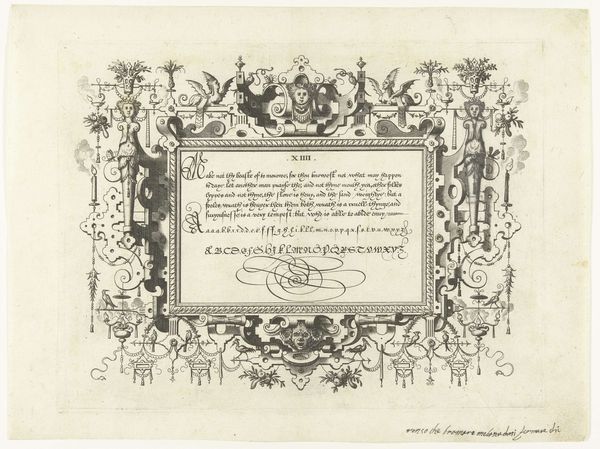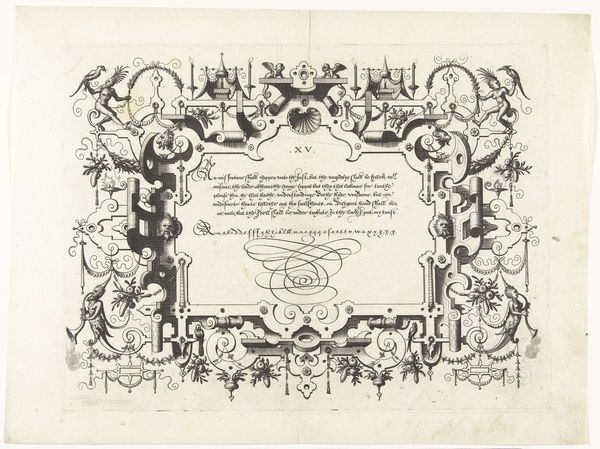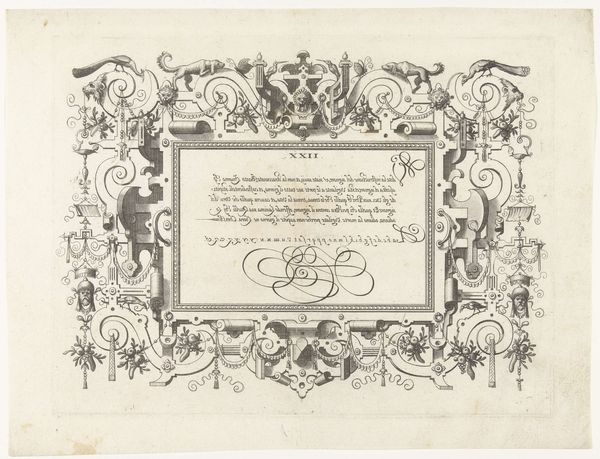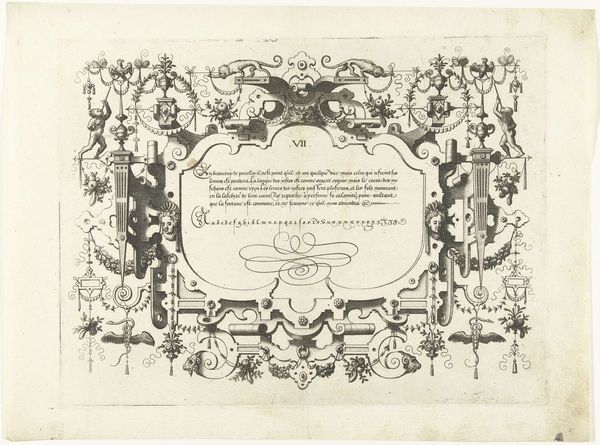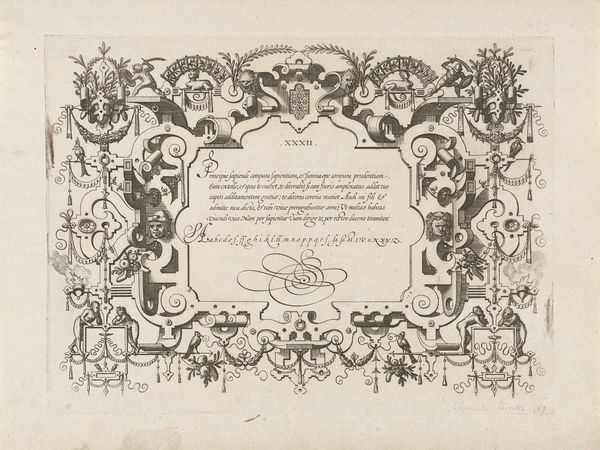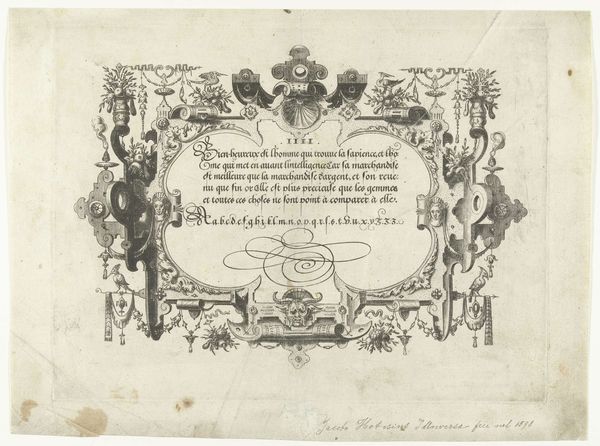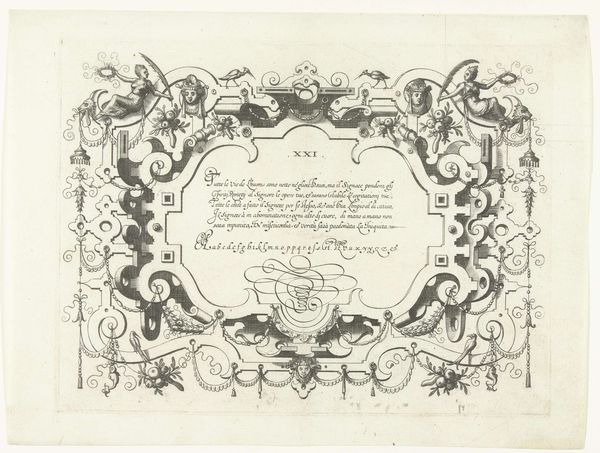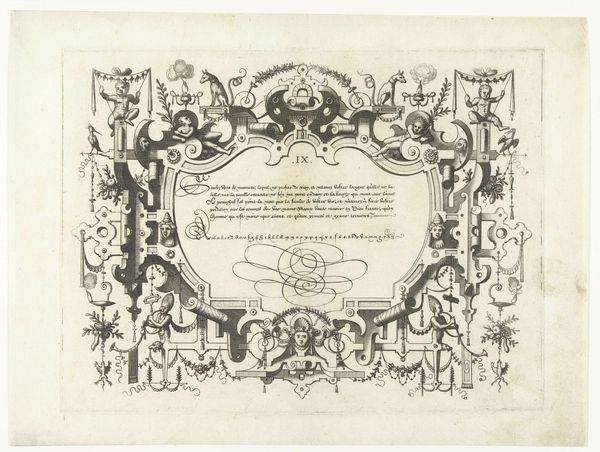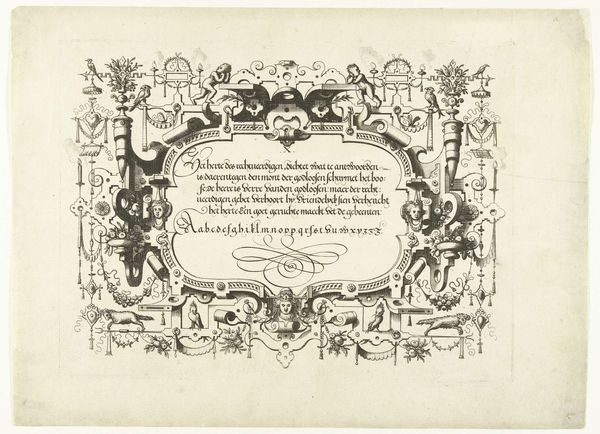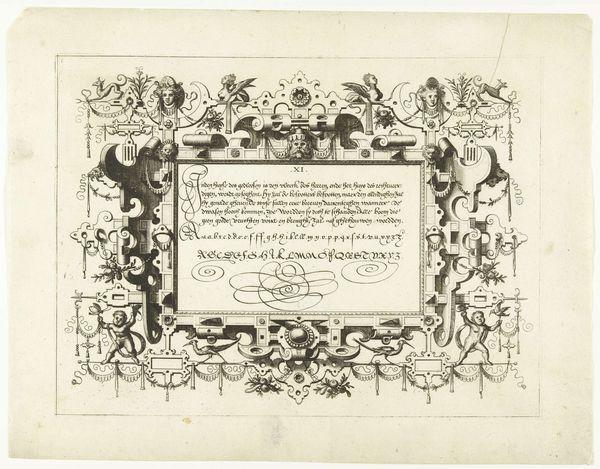
drawing, graphic-art, print, ink, engraving
#
drawing
#
graphic-art
#
pen drawing
# print
#
form
#
11_renaissance
#
ink
#
line
#
engraving
#
calligraphy
Dimensions: height 214 mm, width 288 mm
Copyright: Rijks Museum: Open Domain
Curator: This intricate engraving is titled "Cartouche met kalligrafie, onderaan twee leeuwen," which translates to "Cartouche with calligraphy, two lions at the bottom." Created in 1569 by Johannes or Lucas van Doetechum, it showcases calligraphy framed by ornate embellishments. Editor: My first thought? This looks like a riddle waiting to be solved, or a secret message hidden in plain sight. The swirling lines of the calligraphy combined with the lions feel imposing. It makes me want to decode it. Curator: Indeed, the cartouche form was incredibly popular during the Renaissance, offering artists a contained space to showcase their skills. Doetechum was particularly known for his printmaking and engravings, and his works were disseminated widely. This particular piece demonstrates a command of line and a keen understanding of decorative arts. The lettering reminds me of a typeface specimen. Editor: The placement of the lions – they ground the whole thing. It is fascinating how something purely decorative can be so weighted with symbolism, isn't it? How would a piece like this function, beyond aesthetic enjoyment? Curator: These decorative prints, circulating within intellectual and artistic circles, often served as models or source material for other artists. The elaborate framework of this piece provides visual ideas; the calligraphy provides alphabets and phrases that could be incorporated into other artworks, architectural designs, or even applied to personal objects. Calligraphy itself held great social importance; a skilled hand demonstrated education and refinement. Editor: So, in a way, this engraving embodies both form and function. What feels so purely decorative actually holds the key to practical applications elsewhere. The detail in the cherubic figures at the top of the cartouche juxtaposed with the severity of the letters. I’m still wondering what message is being offered... Curator: That's precisely the genius of pieces like this! They exist at the intersection of artistic skill, social significance, and intellectual engagement. Consider also the dissemination of knowledge that these prints fostered, influencing taste and design across geographic boundaries. Editor: Yes, from aesthetic appreciation to practical implementation and social currency—it layers so many functions. It offers so much to admire in its complex framing, I'm still puzzling over it. Thanks for illuminating all its complexities!
Comments
No comments
Be the first to comment and join the conversation on the ultimate creative platform.
